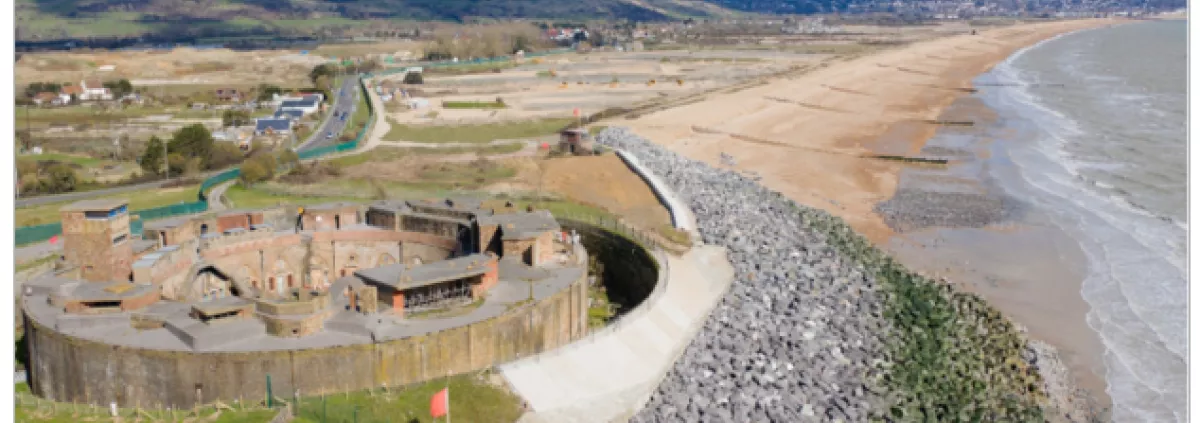The Hythe Ranges Sea Defences project and the Lydd Ranges Emergency Works were carried out by Van Oord, supported by their subsidiary partner Mackley and on behalf of the Environment Agency.
Storms in winter 2019/20 severely depleted the coastline in front of the Ministry of Defence (MoD) firing ranges at Lydd, and immediate emergency works were required to stabilize them. A major capital scheme to improve the protection from coastal flooding at Lydd was planned for 2021/22.
At the same time, a £25 million scheme to refurbish the beaches at Hythe, located some 25km away and with similar characteristics and environmental requirements, was also about to get underway.
The Environment Agency and Van Oord came together to solve the challenges posed by the requirement for immediate intervention at Lydd, limited access due to the MoD using the firing range, and how to meet the very difficult and tight specification for beach material that complied with the strict, legally protected requirements for the internationally designated nature conservation site.
By placing carbon at the heart of your project, the EA has demonstrated the success you can achieve in a showcase of collaborative behaviours and new initiatives to achieve significant carbon savings on the schemes, including:
The Hythe project achieving efficiencies of over £2.5 million and more than 1,660t CO2e savings:
- 490t CO2e saved by realigning a sheet pile wall to reduce total steel by 75%
- 390t CO2e saved by optimising the construction of the rock revetment toe and use of a geotextile to reduce the rock volume by 30%
- 570t CO2e from reducing the number of timber groynes from 45 to 30, saving approximately 30% of the timber volume
- 215t CO2e saved on concrete including the pioneering use of low carbon concrete.
While at Lydd, mitigation measures to reduce carbon emissions included:
- use of a modern more fuel-efficient dredger to import shingle, saving on our overall fuel consumptions;
- use of biofuels within site based plant which can reduce CO2 emissions by 90% compared to traditional fuels;
- minimise sailing distance between dredge site and Lydd Ranges to reduce fuel consumption;
- use of ultra-low carbon Cemfree concrete where viable as an alternative to traditional concrete mix;
- reuse of existing dilapidated concrete access track as sub-base for the new roadway to minimise wastage and reduce volume of new material required;
- consideration of technical alternatives to steel sheet piling;
- utilisation of recycled timbers and scrap timber;
- utilisation of solar powered site cabins;
- LPG power generation for site cabin infrastructure where demands are not met from solar;
- use of technology (webcams) for virtual meetings to reduce the need for travel to site.
Success has been attributed to creating the culture of collaboration in the project team which has driven success through value engineering, sharing knowledge and improving benchmark data such as a novel approach to carbon reporting, adopting a 'carbon flow forecast' through the project to enable forward look on carbon expenditure through the delivery lifecycle and enable interventions.
